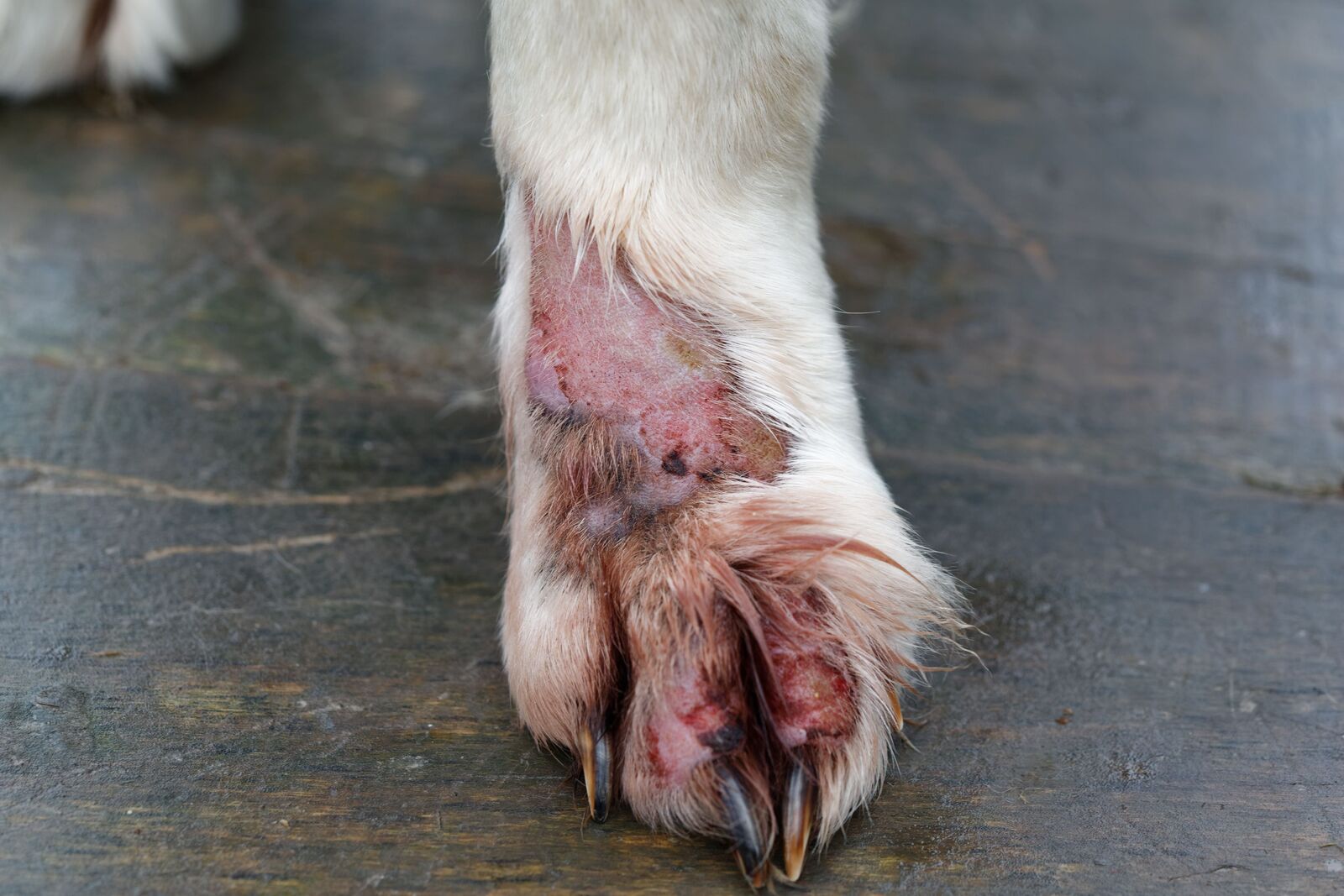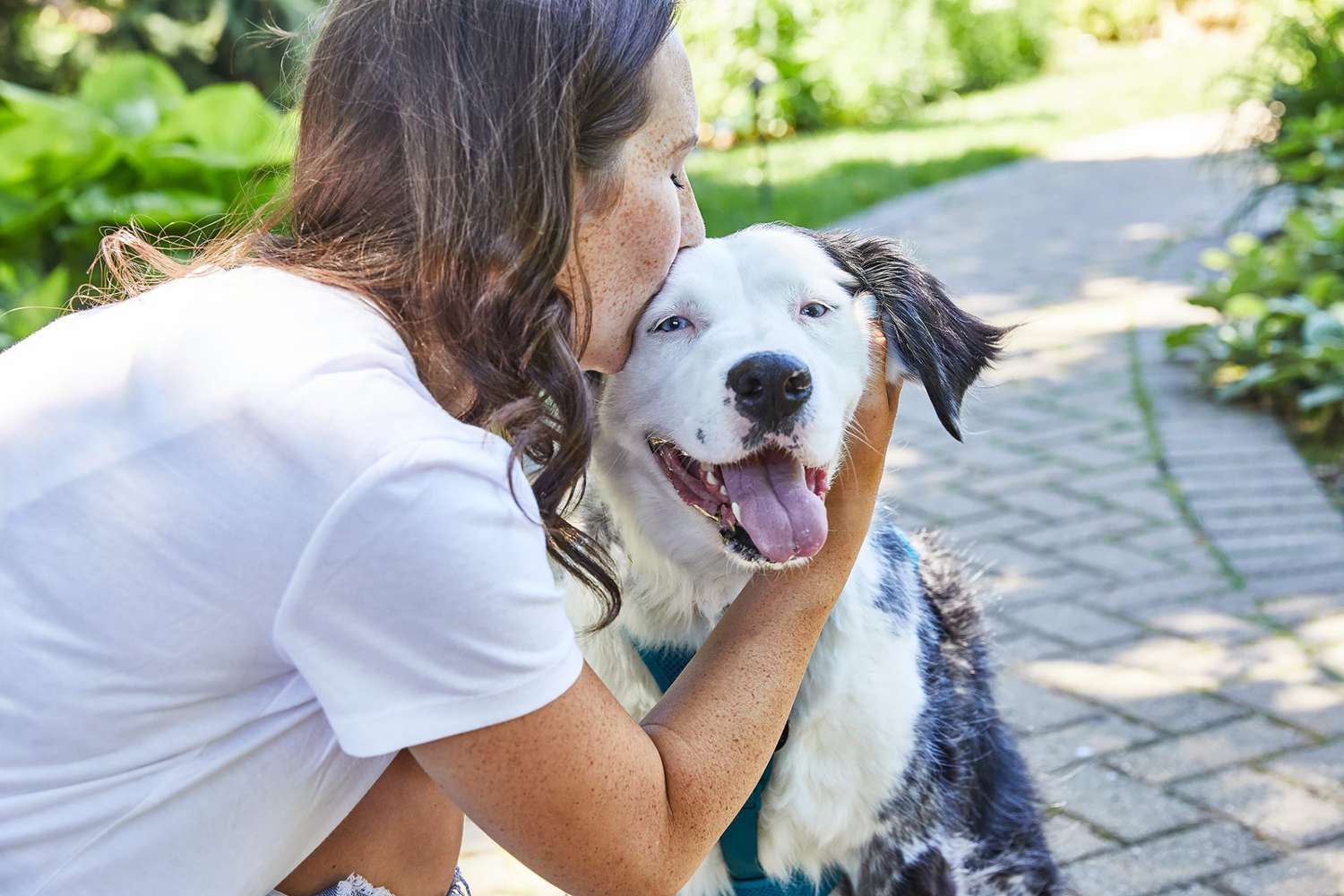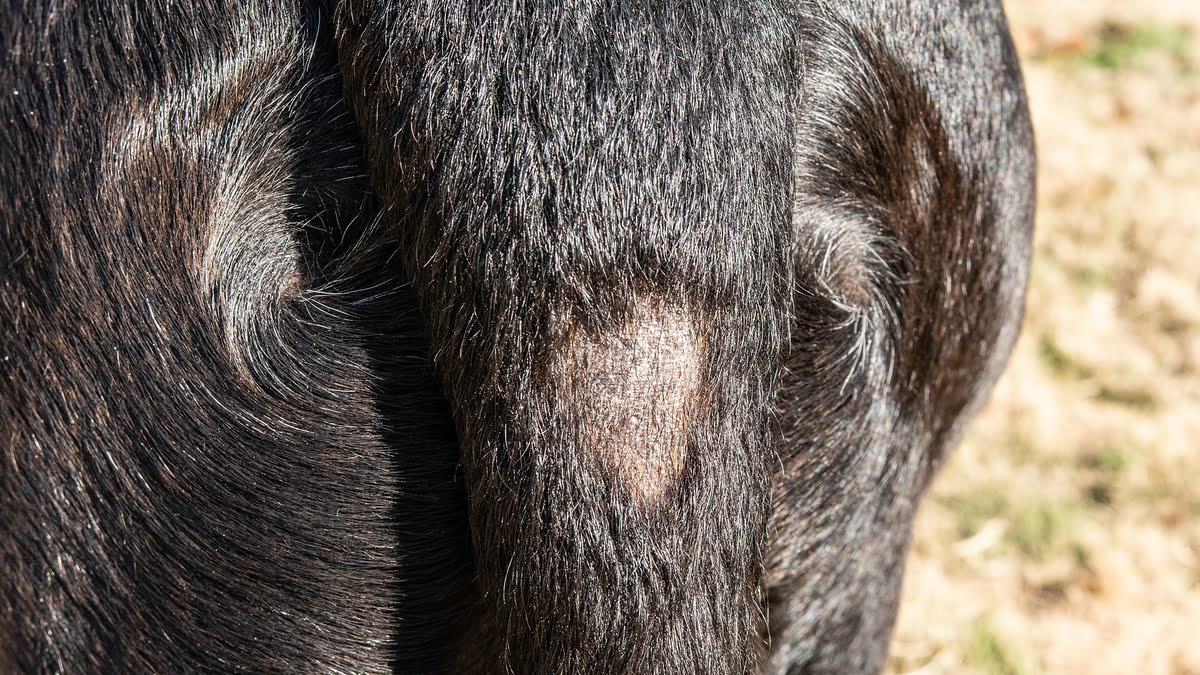Home>Health & Wellness>Common Health Issues>What Causes Sarcoma Cancer In Dogs


Common Health Issues
What Causes Sarcoma Cancer In Dogs
Published: February 4, 2024
Learn about the common health issues that can cause sarcoma cancer in dogs. Understand the risk factors and symptoms to keep your pet healthy.
(Many of the links in this article redirect to a specific reviewed product. Your purchase of these products through affiliate links helps to generate commission for Pawsomeoldies.com, at no extra cost. Learn more)
Table of Contents
Introduction
Sarcoma cancer in dogs is a complex and challenging health issue that affects our beloved canine companions. This type of cancer originates in the connective tissues, including bones, muscles, and cartilage, and can manifest in various forms, such as osteosarcoma, hemangiosarcoma, and fibrosarcoma. Understanding the factors that contribute to the development of sarcoma cancer in dogs is crucial for pet owners and veterinarians alike.
This article delves into the multifaceted nature of sarcoma cancer in dogs, exploring the interplay of genetic and environmental factors, radiation and chemical exposure, as well as viral infections. By shedding light on these aspects, we aim to provide valuable insights into the potential causes of sarcoma cancer in dogs, empowering pet owners to make informed decisions about their furry friends' health and well-being.
Read more: What Causes Blood Cancer In Dogs
Genetic Factors
Genetic factors play a pivotal role in the development of sarcoma cancer in dogs. Canine breeds are known to have distinct genetic predispositions to certain types of sarcomas. For instance, larger dog breeds such as Great Danes, Rottweilers, and Golden Retrievers are more susceptible to osteosarcoma, a common form of sarcoma that affects the bones. On the other hand, Boxers are prone to developing mast cell tumors, a type of sarcoma that originates in the skin's mast cells.
Furthermore, specific genetic mutations have been identified as potential contributors to the onset of sarcoma cancer in dogs. The TP53 gene, often referred to as the "guardian of the genome," is responsible for regulating cell division and preventing the growth of abnormal cells. Mutations in this gene have been linked to an increased risk of developing sarcomas in dogs. Additionally, alterations in the RB1 gene, which plays a crucial role in controlling cell growth, have been associated with the development of sarcomas, particularly osteosarcoma.
Moreover, inherited genetic syndromes can elevate the likelihood of sarcoma occurrence in dogs. For example, dogs with Li-Fraumeni syndrome, a rare hereditary condition characterized by a higher susceptibility to various cancers, including sarcomas, are at an increased risk of developing these malignant tumors.
Understanding the genetic underpinnings of sarcoma cancer in dogs is instrumental in identifying at-risk breeds and individuals. Genetic testing and screening can aid in early detection and proactive management of potential predispositions, thereby enabling pet owners and veterinarians to implement preventive measures and tailored healthcare strategies for dogs with a heightened genetic susceptibility to sarcoma cancer.
By unraveling the intricate interplay of genetic factors in the context of sarcoma cancer in dogs, we can pave the way for targeted interventions, personalized treatment approaches, and enhanced awareness of the genetic determinants that influence the onset and progression of this challenging health condition in our canine companions.
Environmental Factors
Environmental factors exert a profound influence on the development of sarcoma cancer in dogs, encompassing a spectrum of external elements that can impact a dog's susceptibility to this malignancy. One prominent environmental factor is exposure to carcinogenic substances present in the surroundings, including industrial pollutants, herbicides, pesticides, and other chemical agents. Dogs that reside in urban areas or have prolonged exposure to industrial sites may face heightened risks due to the accumulation of environmental toxins in their bodies.
Moreover, the quality of air, water, and soil in a dog's living environment can significantly contribute to the prevalence of sarcoma cancer. Airborne pollutants and contaminants in water sources may introduce carcinogens into a dog's system, potentially triggering the onset of sarcomas. Additionally, the presence of heavy metals, such as arsenic and cadmium, in the soil can pose health hazards for dogs, potentially increasing their vulnerability to developing sarcoma cancer.
Furthermore, lifestyle factors, including diet and physical activity, play a pivotal role in shaping a dog's susceptibility to sarcoma cancer. Poor nutrition, consumption of processed foods, and exposure to dietary toxins can compromise a dog's immune system and metabolic health, potentially creating an environment conducive to the development of sarcomas. Conversely, regular physical activity and a balanced, nutrient-rich diet can bolster a dog's immune defenses and overall well-being, potentially mitigating the risk of sarcoma occurrence.
In addition to dietary and environmental influences, the presence of chronic inflammation due to untreated infections, injuries, or underlying health conditions can contribute to the development of sarcoma cancer in dogs. Chronic inflammation can create a pro-carcinogenic microenvironment within a dog's body, fostering the growth and progression of malignant tumors. Therefore, prompt management of infections, injuries, and inflammatory conditions is essential in reducing the risk of sarcoma development in dogs.
Understanding the multifaceted impact of environmental factors on the occurrence of sarcoma cancer in dogs underscores the significance of promoting a healthy, toxin-free living environment for our canine companions. By minimizing exposure to environmental pollutants, optimizing dietary and lifestyle choices, and addressing inflammatory conditions promptly, pet owners and veterinarians can proactively mitigate the environmental risk factors associated with sarcoma cancer in dogs, thereby fostering a healthier and more resilient canine population.
Radiation Exposure
Radiation exposure represents a significant environmental factor that can contribute to the development of sarcoma cancer in dogs. Dogs may encounter radiation through various sources, including medical treatments, environmental contamination, and occupational hazards. Understanding the implications of radiation exposure is crucial in comprehending its potential role in the onset of sarcomas in dogs.
Medical radiation therapy, commonly used in veterinary medicine for the treatment of various conditions, can inadvertently predispose dogs to the risk of developing sarcoma cancer. While radiation therapy is a valuable tool in managing certain health issues, it's essential to acknowledge the potential long-term effects it may have on a dog's well-being. Prolonged or intensive exposure to therapeutic radiation can damage healthy tissues and cells, potentially leading to the development of secondary sarcomas in dogs. Therefore, prudent monitoring and judicious use of radiation therapy are imperative in minimizing the associated risks and safeguarding the overall health of canine patients.
In addition to medical radiation, environmental contamination from nuclear facilities, industrial sites, and natural sources can expose dogs to ionizing radiation, which has been linked to an increased incidence of sarcoma cancer. Dogs residing in proximity to nuclear power plants, uranium mining areas, or regions with elevated natural background radiation levels may face heightened susceptibility to radiation-induced sarcomas. Furthermore, occupational exposure to radiation, such as in the context of military or research settings, can pose significant health risks for working dogs, potentially elevating their vulnerability to sarcoma development.
Moreover, accidental radiation exposure, such as in the aftermath of nuclear accidents or environmental disasters, can have profound implications for canine health. Dogs exposed to radioactive fallout or contaminated environments may experience heightened risks of developing sarcoma cancer due to the deleterious effects of ionizing radiation on their cellular integrity and genetic stability.
By recognizing the potential impact of radiation exposure on the occurrence of sarcoma cancer in dogs, veterinarians and pet owners can implement proactive measures to minimize radiation-related risks. This includes prudent utilization of medical radiation therapy, diligent monitoring of environmental radiation levels, and adherence to safety protocols in occupational settings where radiation exposure may occur. Furthermore, fostering awareness of potential radiation hazards and advocating for stringent regulatory measures to mitigate environmental radiation contamination can contribute to safeguarding the well-being of dogs and reducing the incidence of radiation-induced sarcomas in the canine population.
Understanding the multifaceted implications of radiation exposure in the context of sarcoma cancer in dogs underscores the importance of proactive risk management and informed decision-making to protect the health and vitality of our beloved canine companions.
Chemical Exposure
Chemical exposure represents a significant environmental factor that can profoundly impact a dog's susceptibility to sarcoma cancer. Dogs may encounter a myriad of chemical substances in their living environments, ranging from industrial pollutants and household chemicals to agricultural pesticides and herbicides. Understanding the implications of chemical exposure is crucial in comprehending its potential role in the onset of sarcomas in dogs.
Industrial pollutants, including heavy metals, volatile organic compounds, and industrial by-products, can pose substantial health risks for dogs. Dogs residing in urban areas or in proximity to industrial sites may face heightened exposure to airborne pollutants and contaminants, potentially increasing their vulnerability to developing sarcoma cancer. Additionally, dogs that frequent areas with industrial activities or waste disposal sites may encounter hazardous chemicals, further elevating their risk of sarcoma development.
Household chemicals, such as cleaning agents, solvents, and chemical-based products, can also contribute to chemical exposure in dogs. Accidental ingestion or inhalation of household chemicals, as well as dermal contact with these substances, can introduce toxic compounds into a dog's system, potentially impacting their cellular health and predisposing them to the development of sarcomas.
Agricultural chemicals, including pesticides, herbicides, and fertilizers, represent another significant source of chemical exposure for dogs, particularly those residing in rural or agricultural areas. Dogs that roam in fields or gardens treated with chemical agents may inadvertently come into contact with these substances, increasing their risk of chemical exposure-related health complications, including sarcoma development.
Furthermore, occupational exposure to chemicals, such as in the context of industrial or agricultural work settings, can pose substantial health risks for working dogs. Dogs involved in tasks that entail exposure to chemical agents, such as detection work, agricultural activities, or industrial operations, may face heightened susceptibility to the adverse effects of chemical exposure, potentially impacting their overall health and well-being.
By recognizing the multifaceted implications of chemical exposure on the occurrence of sarcoma cancer in dogs, veterinarians and pet owners can implement proactive measures to minimize chemical-related risks. This includes promoting awareness of potential chemical hazards, advocating for safe storage and handling of household chemicals, and implementing stringent safety protocols in industrial and agricultural settings to mitigate chemical exposure risks for dogs.
Understanding the intricate interplay of chemical exposure in the context of sarcoma cancer in dogs underscores the importance of fostering a safe and toxin-free living environment for our canine companions. By minimizing exposure to chemical pollutants, promoting responsible chemical usage, and advocating for stringent regulatory measures to mitigate environmental contamination, pet owners and veterinarians can contribute to safeguarding the well-being of dogs and reducing the incidence of chemical exposure-related sarcomas in the canine population.
Read more: Which Dog Foods Cause Cancer
Viral Infections
Viral infections represent a compelling area of interest in understanding the potential factors contributing to the development of sarcoma cancer in dogs. While the precise mechanisms linking viral infections to sarcomas are complex and multifaceted, emerging research has shed light on the intricate interplay between specific viruses and the onset of malignant tumors in canine companions.
One of the most notable viral agents associated with sarcoma development in dogs is the canine transmissible venereal tumor (CTVT). CTVT is a unique type of cancer that is transmitted between dogs through the transfer of living cancer cells during mating or close physical contact. This contagious tumor, which originated from a single ancient dog thousands of years ago, has been found to harbor retroviral DNA sequences, suggesting a potential viral involvement in its pathogenesis. While the exact role of the retroviral elements in CTVT remains a subject of ongoing investigation, the presence of viral genetic material within this transmissible tumor highlights the intricate relationship between viral infections and the development of sarcomas in dogs.
Furthermore, the papillomavirus family has garnered attention for its potential association with the development of sarcomas in dogs. Papillomaviruses are known for their diverse effects on epithelial tissues, and certain members of this viral family have been implicated in the pathogenesis of fibropapillomas, benign skin tumors that can progress to malignant fibrosarcomas in dogs. The oncogenic potential of papillomaviruses in inducing cellular transformation and promoting the development of malignant tumors underscores the significance of viral infections as potential contributors to the complex etiology of sarcoma cancer in dogs.
In addition to CTVT and papillomaviruses, other viral agents, such as retroviruses and herpesviruses, have been the focus of scientific inquiry regarding their potential roles in sarcoma development in dogs. The intricate interactions between these viral entities and the host cellular machinery have unveiled intriguing insights into the molecular pathways that may underpin the initiation and progression of sarcomas in canine patients.
Understanding the potential implications of viral infections in the context of sarcoma cancer in dogs underscores the significance of ongoing research efforts aimed at unraveling the intricate interplay between viral agents and the development of malignant tumors. By delving into the complex mechanisms through which viral infections may contribute to sarcoma pathogenesis, veterinarians and researchers can pave the way for enhanced preventive strategies, targeted interventions, and heightened awareness of the viral determinants that influence the onset and progression of this challenging health condition in our canine companions.
Conclusion
In conclusion, the multifaceted nature of sarcoma cancer in dogs encompasses a complex interplay of genetic and environmental factors, radiation and chemical exposure, as well as potential viral infections. The intricate web of influences that contribute to the onset and progression of sarcomas in canine companions underscores the significance of comprehensive understanding and proactive measures to address this challenging health issue.
Genetic factors, including breed predispositions, specific genetic mutations, and inherited syndromes, play a pivotal role in shaping a dog's susceptibility to sarcoma cancer. Recognizing the genetic determinants that influence the occurrence of sarcomas in dogs empowers pet owners and veterinarians to implement targeted interventions, genetic testing, and tailored healthcare strategies to mitigate potential predispositions and enhance proactive management.
Environmental factors, encompassing exposure to carcinogenic substances, lifestyle influences, and chronic inflammation, significantly impact a dog's vulnerability to sarcoma development. By promoting a healthy, toxin-free living environment, optimizing dietary and lifestyle choices, and addressing inflammatory conditions promptly, pet owners and veterinarians can proactively mitigate the environmental risk factors associated with sarcoma cancer in dogs, fostering a healthier and more resilient canine population.
Moreover, radiation and chemical exposure represent substantial environmental factors that can influence a dog's susceptibility to sarcoma cancer. Prudent monitoring and judicious use of radiation therapy, diligent monitoring of environmental radiation levels, and advocating for safe storage and handling of household chemicals are essential in minimizing associated risks and safeguarding the overall health of canine patients.
The potential implications of viral infections, such as CTVT and papillomaviruses, in the context of sarcoma development in dogs underscore the significance of ongoing research efforts aimed at unraveling the intricate interplay between viral agents and the development of malignant tumors. By delving into the complex mechanisms through which viral infections may contribute to sarcoma pathogenesis, veterinarians and researchers can pave the way for enhanced preventive strategies, targeted interventions, and heightened awareness of the viral determinants that influence the onset and progression of this challenging health condition in our canine companions.
In essence, a comprehensive understanding of the potential causes of sarcoma cancer in dogs empowers pet owners and veterinarians to implement proactive measures, personalized healthcare strategies, and heightened awareness, thereby fostering a healthier and more resilient canine population. By unraveling the intricate web of influences that contribute to the onset and progression of sarcomas in dogs, we can pave the way for targeted interventions, enhanced preventive strategies, and a deeper appreciation of the multifaceted nature of this challenging health condition in our beloved canine companions.














